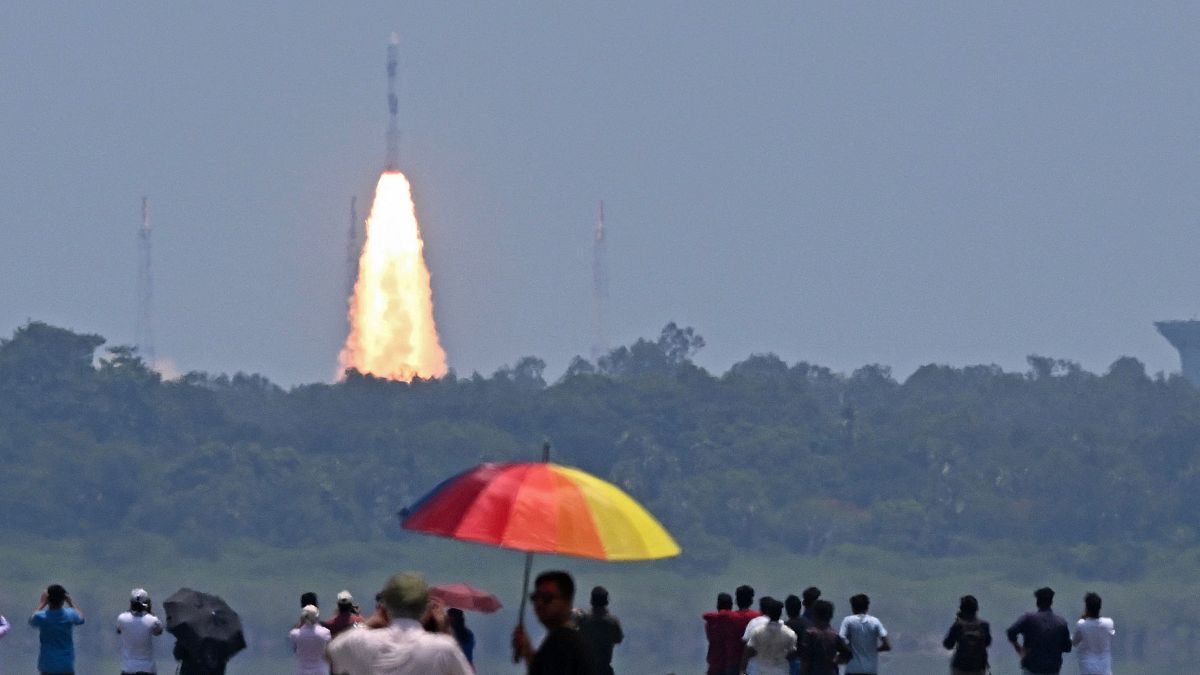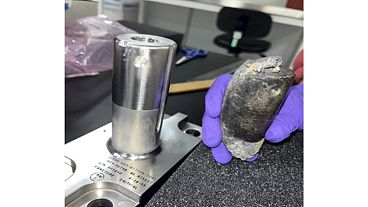India launched the mission in its ambitious space programme on Saturday on a trip to the centre of the solar system.
India launched the next mission in its ambitious space programme on Saturday on a trip to the centre of the solar system, a week after successfully landing an unmanned vehicle near the Moon's south pole.
The Aditya-L1 probe - meaning 'Sun' in Hindi - was launched at 11:50 local time, with a live television broadcast showing hundreds of spectators cheering wildly amid the deafening noise of the rocket's ascent.
"The launch was successful, everything is normal," announced an official from the Indian Space Research Organization (ISRO) from the mission control centre, as the spacecraft headed towards the upper reaches of the atmosphere.
The mission carries scientific tools to observe the outer layers of the Sun during a four-month journey.
The United States and the European Space Agency (ESA) have already placed devices in orbit to study the sun, starting with NASA's Pioneer programme in the 1960s, but this will be a first for India.
Both Japan and China have previously launched their own solar observation missions into Earth's orbit but, if successful, ISRO's latest mission will be the first to be placed in orbit around the Sun by an Asian nation.
Mission to help predict solar phenomena
The probe will study coronal mass ejections, a periodic phenomenon that results in enormous discharges of plasma and magnetic energy from the sun's atmosphere.
They are so powerful that they can reach Earth and potentially disrupt the operation of satellites.
Aditya will help predict these phenomena and let people know to cut off the power to their satellites.
Aditya will travel 1.5 million kilometres to reach its destination - still only 1 per cent of the immense distance between Earth and the Sun.
At that point, the gravitational forces of the two celestial bodies cancel each other out, allowing the mission to remain in a stable orbit.
The study satellite is carried by the 320-ton ISRO-designed PSLV XL rocket, which is one of the pillars of India's space programme and has already carried out launches to the Moon and Mars.
The mission also aims to shed light on the dynamics of several other solar phenomena by imaging and measuring particles in the sun's upper atmosphere.
India's success in space
India has consistently matched the achievements of established space powers at a fraction of their cost.
According to industry experts, the nation manages to keep costs low by replicating and adapting existing space technology for its own purposes, in particular thanks to the large number of highly qualified engineers paid much less than their foreign counterparts.
Last month's successful moon landing - a feat previously achieved only by Russia, the United States and China - cost less than $75 million (€70 million).
In 2014, India was the first Asian nation to place a spacecraft in orbit around Mars. It plans to launch a three-day manned mission around Earth by next year.
A joint mission with Japan should make it possible to send a probe to the moon by 2025 as well as a mission to Venus in a similar time frame.



